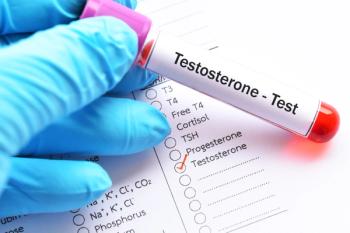
Birx: There Have Been Gains, and Setbacks, in Our Global Fight Against HIV
“We need to maintain our focus on key populations to ensure that we're focusing on each and every key population—from men who have sex with men to sex workers to people who inject drugs to our trans community—to make sure every single community has access to both prevention and treatment services and that we’re meeting each of the community members where they are to ensure that they can achieve viral suppression,” said Ambassador Deborah Birx, MD, on day 4 of AIDS 2020.
Ambassador Deborah Birx, MD, presented targets met, those that have been missed, and what should come next in the global fight against
Birx, who is also US global AIDS coordinator, US special representative for global health diplomacy, and response coordinator for the White House’s Coronavirus Task Force, addressed the where, why, and what:
- Where we are?
- Why are we there?
- What does the world need to move forward?
In charge of implementing PEPFAR and coordinating the US government’s interactions with the
“Our key goals for 2020 were really to sustain the gains and ensure treatment retention, accelerate the control in the countries that have not really achieved control of their pandemic and then ensuring we're addressing the rising new infections among key populations that are our most vulnerable groups,” Birx stated. “We, as a community need to continually analyze and make sure that we're staying true to our goals and serving the needs of that community.”
Everything must be done with a sensitivity to the needs of the population, she emphasized, detailing how PEPFAR has been able to meet its midyear 2020 goals:
- 16.5 million women, men, and children are on antiretroviral therapy (ART)
- 24.5 million voluntary medical male circumcisions since 2003
- 5.8 million orphans, children, and their caregivers have received critical support
- 100% of DREAMS (Determined, Resilience, Empowered, AIDS-Free, Mentored, Safe) program districts have seen a decline in new HIV infections
Success stems from “a combination of sustaining the gains, ensuring we are meeting the needs of individuals at the same time, and improving the areas where we need to improve in those countries where the community viral load suppression is lower,” she noted.
However, Birx did not rest on her laurels. She was not shy in admitting that PEPFAR has fallen short in meeting viral load suppression goals in 5 young age groups, all of which have come in below 80% for fiscal year 2020:
- Up to 1 year: 73%
- 1 to 4 years: 64%
- 5 to 9 years: 74%
- 10 to 14 years: 76%
- 15 to 19 years: 79%
Retention has been one of the biggest issues in that most patients who fall off the radar do so within the first 6 months of initiating ART, which can be especially dangerous because “they haven’t experienced the ravages of HIV and don’t know the importance of viral load suppression.” The largest loss to follow-up has been in children younger than 4 years. In fact, this year PEPFAR has found 57,761 children above the age of 1 who need to be in treatment.
Community-led monitoring is of the utmost importance, which PEPFAR has been doing in conjunction with the Global Fund and community-led groups to continuously improve and fund disease surveillance, “to make sure our service delivery continues to meet the needs, where they are, with successful treatment and also prevention activities,” Birx stated.
Another goal of PEPFAR has been to promote, over the last 36 months, uptake of tuberculosis (TB) preventive therapy for everyone on ART. Toward this goal, PEPFAR has been wildly successful, in that so far this year, patients with HIV who’ve completed TB therapy already exceeds last year’s total. The total target this year is 6,339,560 compared with 2,865,472 in 2019.
She also highlighted the DREAMS program from PEPFAR and some of its greatest successes in sub-Saharan Africa and Haiti:
- $900 million invested
- 15 countries as partners
- Comprehensive prevention efforts for adolescent girls and young women at high risk of acquiring HIV
This program has been able to achieve some spectacular results. For example, in all of the districts it has partnered with in Zimbabwe, Malawi, and Lesotho, there has been an over 25% decline in new HIV cases among adolescent girls and young women (AGYW), and so far this year, more than 433,000 AGYW have been educated on HIV and violence prevention through the program.
“It's the platforms that we've built together and the communities relationships that are going to be our solutions not only for HIV, but our response to COVID-19 around the world,” Birx concluded. “If we had not had those RNA platforms throughout sub-Saharan Africa today, we would not be able to diagnose COVID-19.”
Birx closed out by discussing the importance of being able to guarantee safe access to treatment, in order to safeguard against gains made and to ensure no one with HIV is left behind. She noted that policies mean little if they are only on paper and do nothing to benefit their targeted population.
“We continue to lose our largest number of patients, because we're not providing information in a way that resonates with them,” she concluded. “I think we just have to constantly be talking about and recognizing the people we serve, and if we’re not being successful, it’s because we’re not serving them well.”
Newsletter
Stay ahead of policy, cost, and value—subscribe to AJMC for expert insights at the intersection of clinical care and health economics.















































